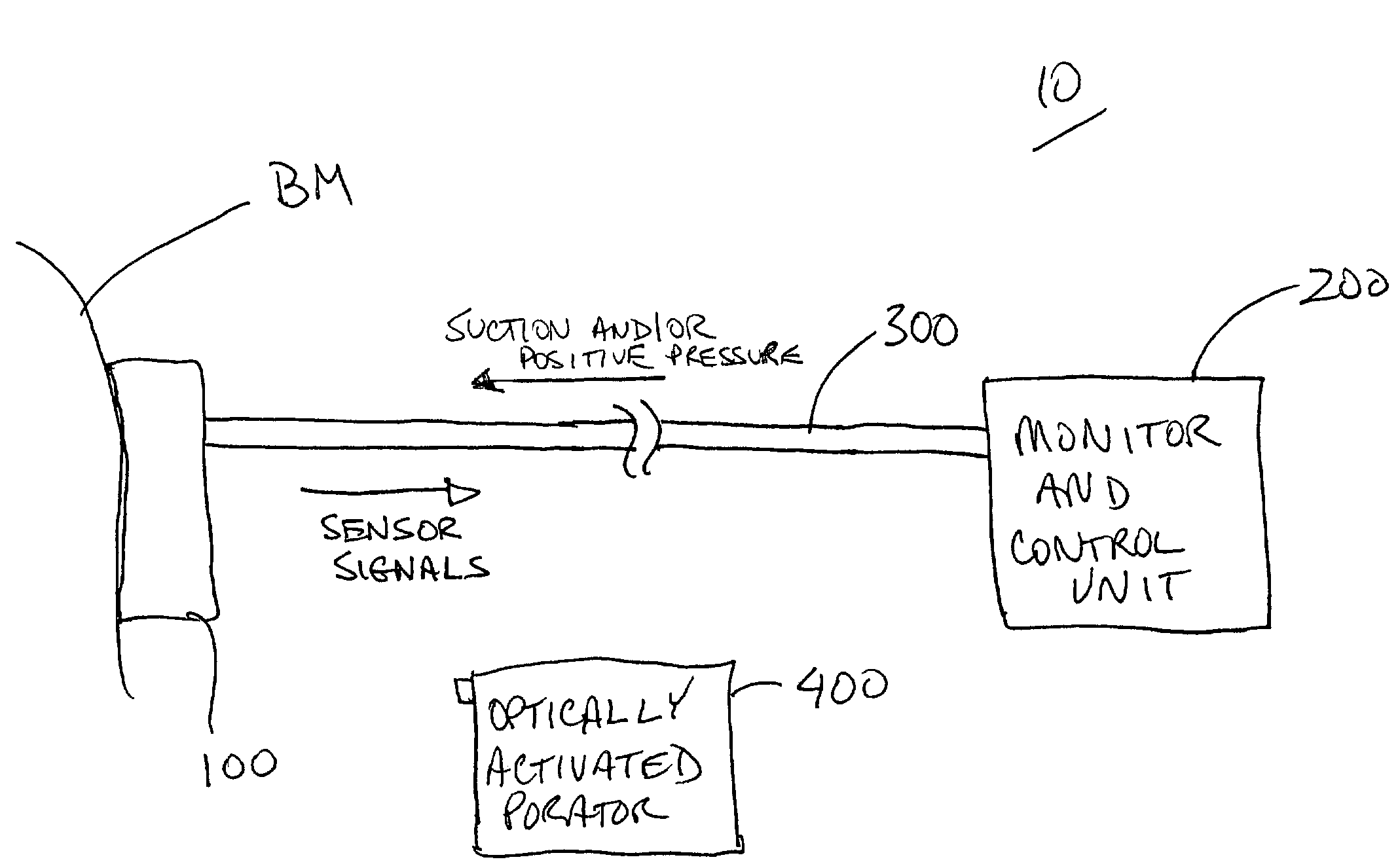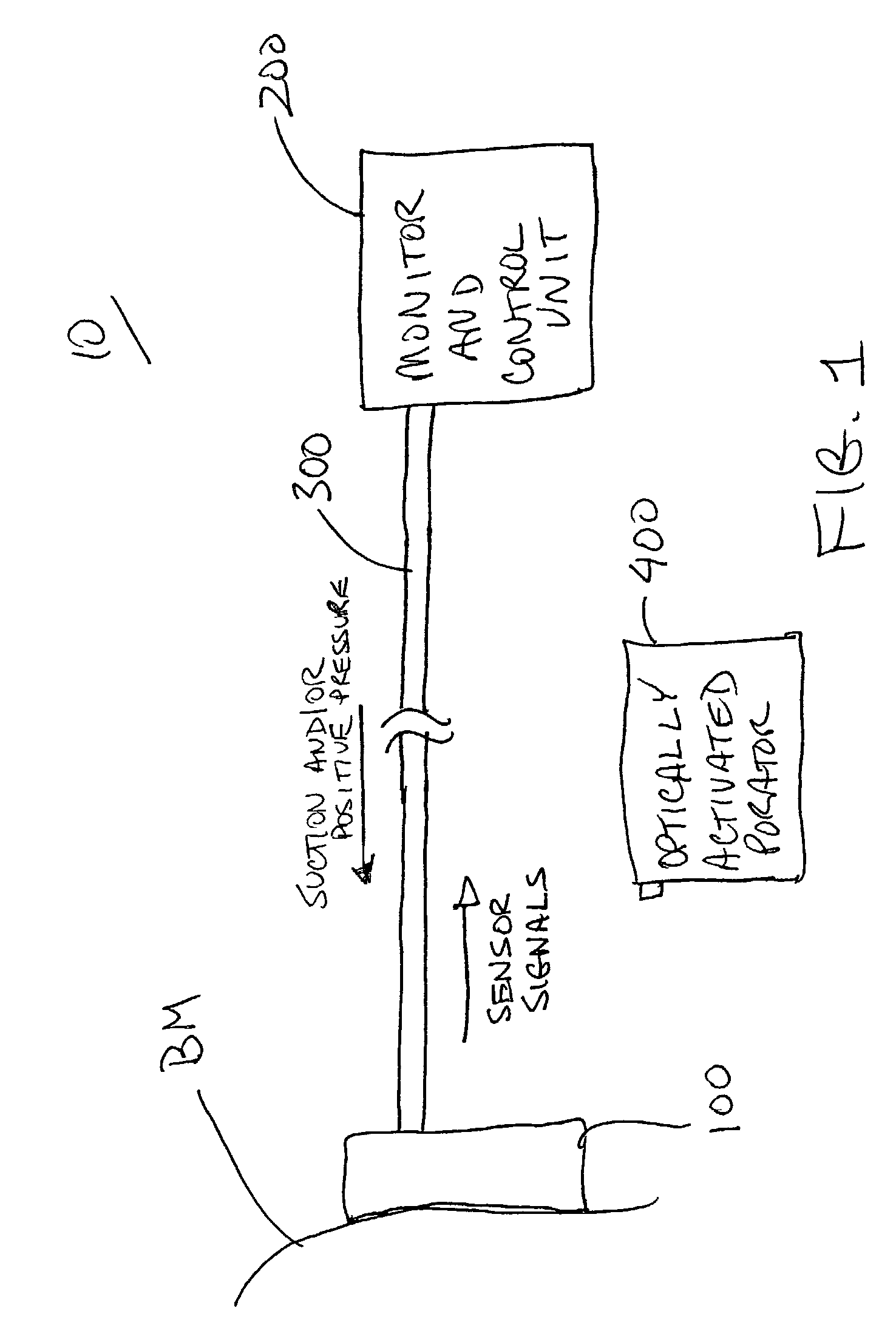System and method for continuous analyte monitoring
a monitoring system and analyte technology, applied in the field of continuous analyte monitoring system, can solve the problems of obviating the significant disadvantage of the implanted system, and achieve the effects of reducing the risk of infection, and improving the safety of patients
- Summary
- Abstract
- Description
- Claims
- Application Information
AI Technical Summary
Benefits of technology
Problems solved by technology
Method used
Image
Examples
Embodiment Construction
Definitions
[0018]As used herein, the term “biological membrane” means the structure separating one area of an organism from another area of the organism, such as a capillary wall, or the outer layer of an organism which separates the organism from its external environment, such as skin, buccal mucosa or other mucous membrane. The term “epithelial tissue,” when used herein is mean to mean skin, mucosa and linings of the body cavities of an organism.
[0019]As used herein, the term “stratum corneum” means the outermost layer of the skin, consisting of from about 15 to about 20 layers of cells. The stratum corneum provides a barrier to the loss of water from inside the body to the external environment and from attack from the external environment to the interior of the body. The term “epidermis” means the metabolically active region of the skin. It is found just below the stratum corneum and is approximately 10 times as thick as the stratum corneum. The epidermis does not contain blood t...
PUM
 Login to View More
Login to View More Abstract
Description
Claims
Application Information
 Login to View More
Login to View More - R&D
- Intellectual Property
- Life Sciences
- Materials
- Tech Scout
- Unparalleled Data Quality
- Higher Quality Content
- 60% Fewer Hallucinations
Browse by: Latest US Patents, China's latest patents, Technical Efficacy Thesaurus, Application Domain, Technology Topic, Popular Technical Reports.
© 2025 PatSnap. All rights reserved.Legal|Privacy policy|Modern Slavery Act Transparency Statement|Sitemap|About US| Contact US: help@patsnap.com



